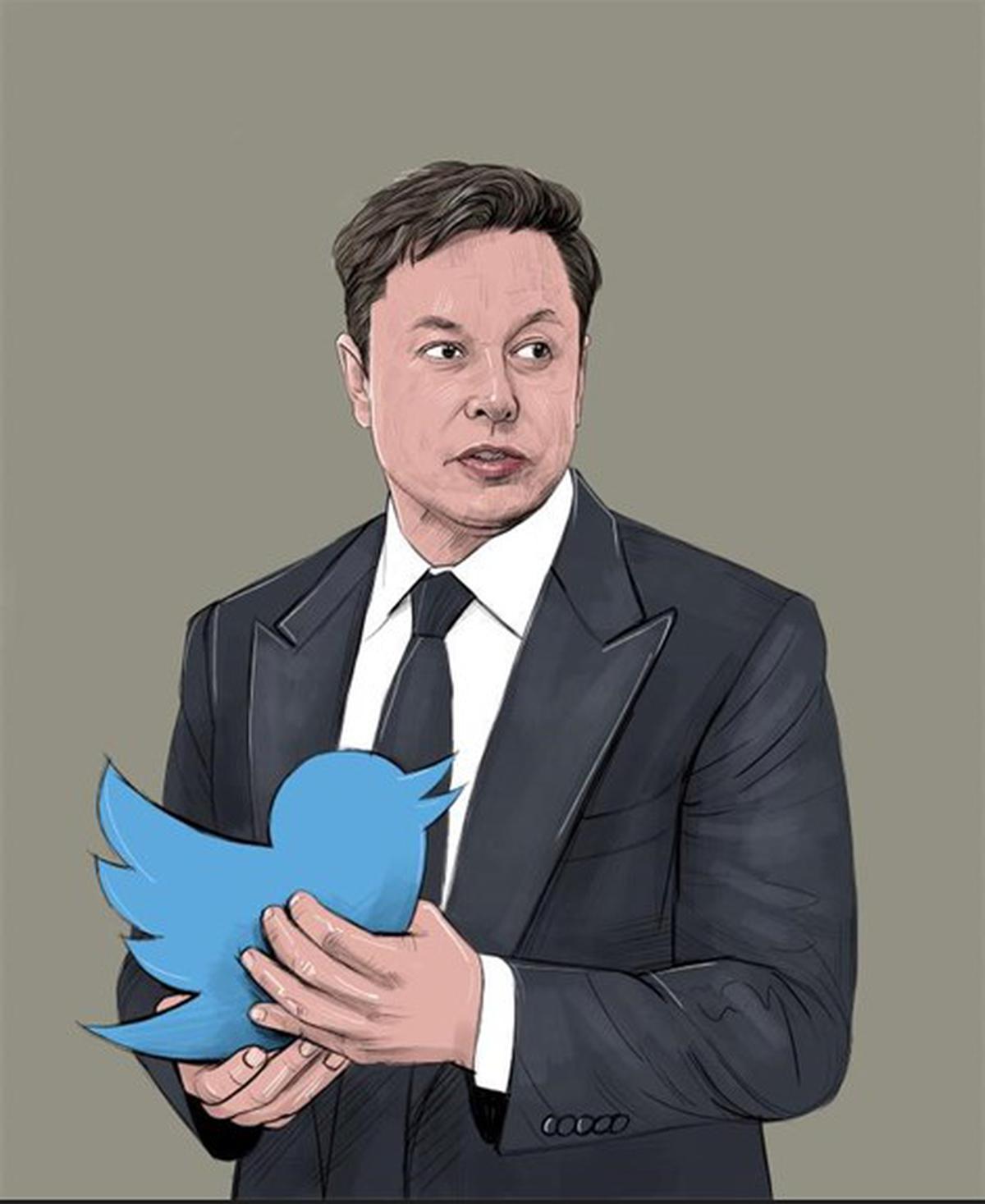
Twitter | Old bird, new king
The Hindu
The takeover of the social app, which has been struggling for years to revive growth amid worries about the spread of fake news and hate speech on its platform, by the world’s richest man, a free speech absolutist, has raised both hopes and concerns about its future
When Elon Musk walked into the Twitter headquarters on Wednesday carrying a sink, the message he hoped to send was a triumphant “let that sink in” — a swipe at his detractors in the company and outside, in his own brand of Internet-friendly humour. However, for some in the Twitterverse, of which he had just been crowned king, the sink symbolised the drain down which he could potentially send the platform.
Twitter is a puzzling piece of property in the Web 2.0 landscape. If its corporate size matched the role it plays in global conversations around any topic of import, Twitter should be one of the largest social media platforms out there. It doesn’t. Not even close. It is a fraction of the size of Meta, the company that runs Facebook, Instagram and WhatsApp. After its IPO in 2013 at $26, Twitter never really sparkled. Its peak was at about $70 a share, and it even slid below its IPO price at one point. In comparison, Meta peaked at nearly $380 per share.
Mr. Musk is taking the company private again by buying out all Twitter shares at $54.20 — quite high, but fitting since it is a tongue-in-cheek reference to marijuana culture. This is a windfall for the shareholders as it had been trading in the low $30s in April when he announced his intention to buy. Twitter has constantly struggled to find a business model that fully monetises the space it occupies in public conversations. It has been kneecapped in this by a platform built for unfettered communication that advertisers are wary of, internal squabbles, and part-time CEOs.
Twitter originated in 2006 from Jack Dorsey’s idea of sharing status updates among friends. The initial versions envisaged using SMS messages for sharing the update; hence, the 140-character limit that persisted well into the future. Mr. Dorsey found backers in Evan Williams — the brain behind Blogger and Medium — Biz Stone, and Noah Glass.
From the early days itself, Mr. Dorsey seems to have had a vision of Twitter as less a social media app and more a communication layer deployable anywhere. This vision is reflected in the Bluesky project that he initiated at Twitter in 2019. Bluesky is touted as an open-source protocol that would decentralise social media, allowing users to take their posts and data with them while moving between platforms. As per reports, Mr. Dorsey is now set to launch a social media platform based on the protocol. Incidentally, one of the key persons on the Bluesky project at Twitter was the then-CTO Parag Agarwal, who succeeded Mr. Dorsey as the CEO in November 2021, and who has now been fired by Mr. Musk.
Mr. Dorsey’s first stint as the CEO lasted till 2008, when he became chairman of the company and was replaced as the CEO by co-founder Evan Williams. He returned as the CEO in 2015 when the then CEO Dick Costolo resigned over criticism of Twitter’s lackadaisical performance on key matrices. Mr. Dorsey’s return was meant to energise the company and help grow its user base and revenues; however, by then he was splitting time as the CEO between Twitter and his other venture, the payments platform Square. His divided attention has been blamed for Twitter staying in the morass. His replacement, Parag Agarwal, had to spend most of his time and energy on the Musk takeover bid rather than revamping the company.
This was not the prospect that one would have imagined for Twitter a decade ago. In the early 2010s, its user base was growing by leaps and bounds, and the app was on the phones of every young person eager to post their opinions on everything from music to politics. It was the app that helped shake up dictatorships in West Asia and North Africa during the Arab Spring of 2011, with some even calling them “Twitter revolutions”. The youthful protestors in countries such as Tunisia, Egypt and Bahrain used Twitter and other social apps as megaphones for their views and as tools to coordinate the protests. At that moment, social media platforms seemed to be the West’s new tools for exporting democracy, and Silicon Valley seemed justified to “move fast and break things” as Facebook CEO Mark Zuckerberg put it.













